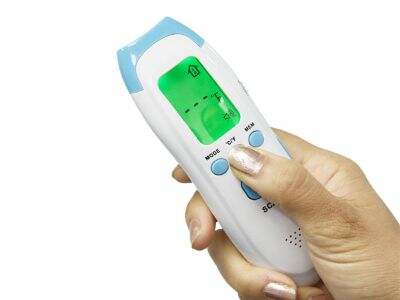Infrared thermometers are instruments that can measure temperature without making contact with the body. They are also widely used in hospitals, schools and homes to screen for fevers or hypothermia. But can these thermometers accurately detect hypothermia or dangerous fever? Read on and we will take a deeper dive to grasp how reliable Digital Infrared Thermometers are to detect fever and fever-related illness.
The Accuracy of Infrared Thermometers for Detecting Hypothermia
Hypothermia occurs when the body temperature falls beneath normal, usually under 95 degrees. However, it is important to bear in mind that skin temperature is not always a reliable indicator of core body temperature, in particular in severe hypothermic state. Infrared thermometers are better used woo other methods to estimate hypothermia.
The Use of Infrared Thermometers for Fever Screening in Children
A high fever can signal the presence of some kind of sickness or infection in the body. Touchless, infrared thermometers that beep can measure body temperature within seconds and without any physical contact. They are non-invasive and yield results on the spot, making them popular for testing whether a child or an adult has a high fever. But it’s also essential to use infrared thermometer properly to obtain the most accurate readings.
Investigating Pros and Cons of IRT as a Screening Tool to Decipher Hypothermia
They are user-friendly, offer rapid result, non-invasive and therefore suitable for patient monitoring in a clinical situation. In severe cases of hypothermia, however, infrared thermometers might not be reliable for measuring core body temperature. Healthcare providers are encouraged to use infrared thermometers, along with other products such as PhanTerm hypothermia thermometer, to assist in identifying and treating hypothermia.
Are Infrared Thermometers Recommended for High Fever Detection?
Infrared thermometers are accurate devices used to measure high body temperatures of patients. They provide quick, easy and accurate measurements give the healthcare provider the information they need to make an accurate diagnosis. But when you're using an infrared thermometer, you need to follow manufacturer guidelines to get the most accurate results. The accuracy of infrared thermometer for fever is influenced by factors such as distance to spot ratio and ambient temperature, so be sure to use in the correct method.
Dealing with the Difficulties of Using Infra-red Thermometers To Detect Hypothermia accurately
There can be difficulties with the accurate recognition of hypothermia with the use of infrared thermometers. In severe hypothermia, skin temperature is not a reliable measure of the core body temperature, which could result in misdiagnosis. Clinicians should be aware of the limitations of these instruments and use these infrared thermometers in combination with other measures when diagnosing and treating hypothermia. Nevertheless infrared thermometers continue to be an important device to monitor body temperature and detect hypothermia in patients.
Table of Contents
- The Accuracy of Infrared Thermometers for Detecting Hypothermia
- The Use of Infrared Thermometers for Fever Screening in Children
- Investigating Pros and Cons of IRT as a Screening Tool to Decipher Hypothermia
- Are Infrared Thermometers Recommended for High Fever Detection?
- Dealing with the Difficulties of Using Infra-red Thermometers To Detect Hypothermia accurately








